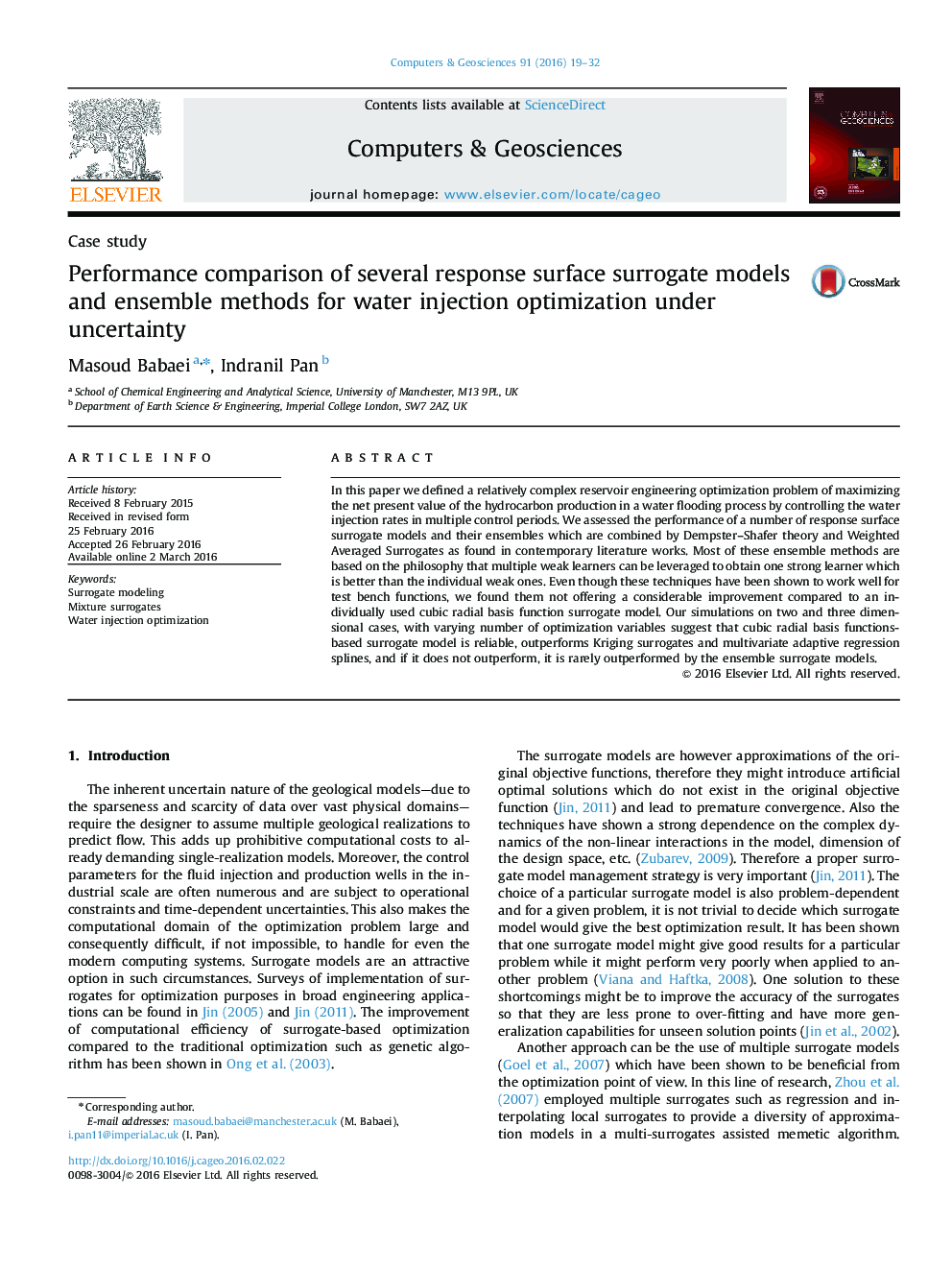| Article ID | Journal | Published Year | Pages | File Type |
|---|---|---|---|---|
| 506802 | Computers & Geosciences | 2016 | 14 Pages |
•Cubic RBF, Kriging and MARS are employed for a water injection optimization problem.•Two recently presented algorithms of combining the surrogate models are employed.•Cubic RBF outperforms consistently Kriging and MARS.•The ensemble surrogates do not perform significantly better than cubic RBF.
In this paper we defined a relatively complex reservoir engineering optimization problem of maximizing the net present value of the hydrocarbon production in a water flooding process by controlling the water injection rates in multiple control periods. We assessed the performance of a number of response surface surrogate models and their ensembles which are combined by Dempster–Shafer theory and Weighted Averaged Surrogates as found in contemporary literature works. Most of these ensemble methods are based on the philosophy that multiple weak learners can be leveraged to obtain one strong learner which is better than the individual weak ones. Even though these techniques have been shown to work well for test bench functions, we found them not offering a considerable improvement compared to an individually used cubic radial basis function surrogate model. Our simulations on two and three dimensional cases, with varying number of optimization variables suggest that cubic radial basis functions-based surrogate model is reliable, outperforms Kriging surrogates and multivariate adaptive regression splines, and if it does not outperform, it is rarely outperformed by the ensemble surrogate models.
